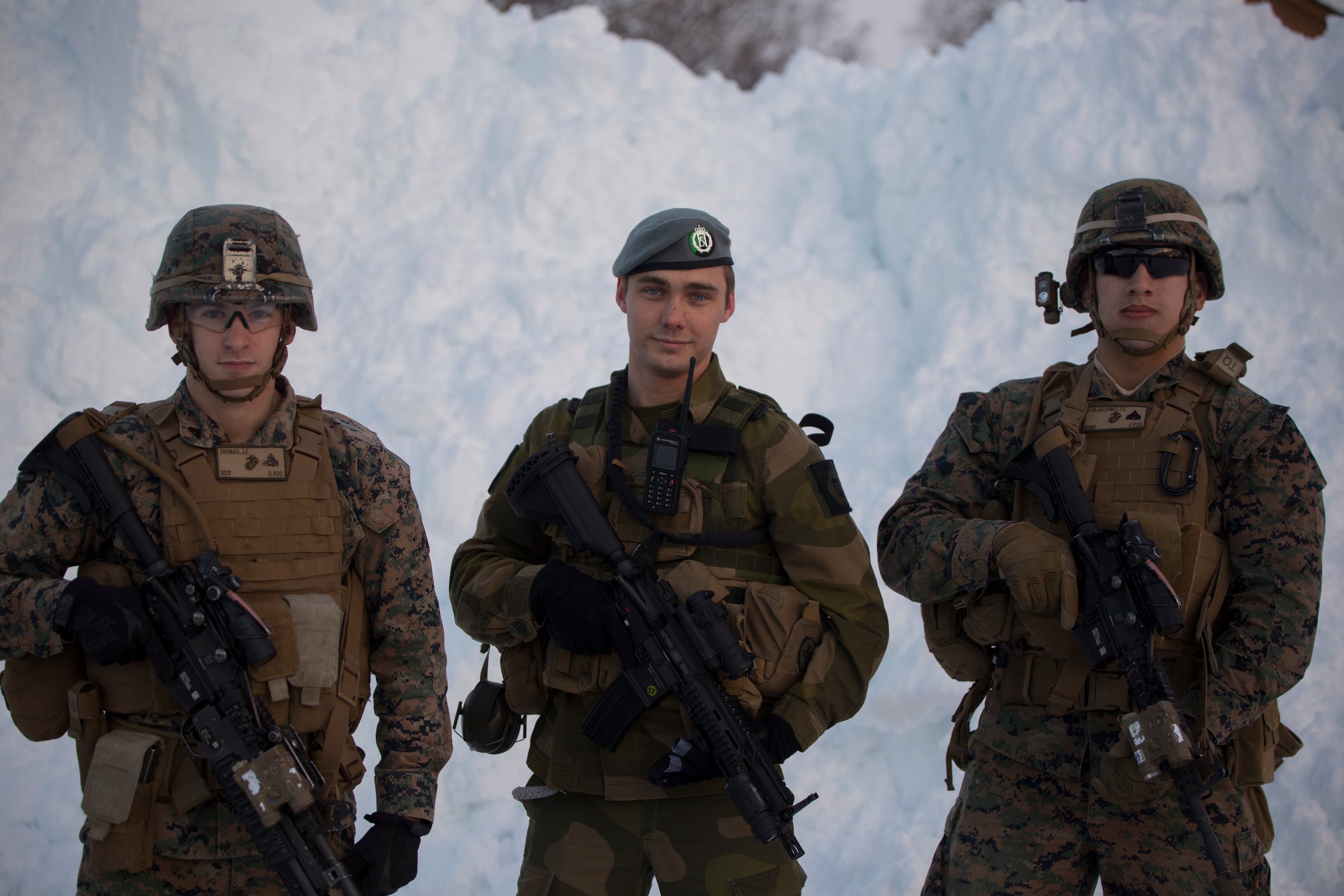Very few of the 300 Marines who are now deployed to Norway know how to ski, but they are about to learn very soon — on the Arctic slopes near the Russian border.
Next week the Marines will get their skis and snowshoes as they prepare to spend six weeks in remote town of Porsangmoen — less than 200 miles from Norway's Arctic border with Russia — on a first-of-its-kind deployment that is fueling Cold War-era tensions with Moscow.
"Beginning next week, they'll be outside all day long for the skiing and snowshoeing," said Col. Doug Bruun, whose job is to coordinate with the Norwegian government on Marine rotations. Bruun's formal title is Marine coordination element officer in charge for U.S. Marine Corps Forces Europe and Africa.
"They're learning how to walk across the snow and glide on the snow and move distances using skis and snow shoes. Downhill [skiing] is not on the agenda yet," Bruun told Military Times in a telephone interview on Jan. 17.
The Marines' six-month deployment will focus on tactical training for offensive operations in a cold-weather environment, which includes being able to shoot and move in the mountains.
But they are also at the center of a geopolitical clash between Russia and the NATO alliance.

Marines stand alongside a Norwegian Home Guard 12 at Vaernes Garnison, Norway, Jan. 16.
Photo Credit: Lance Cpl. Victoria Ross.
The deployment plans announced last year set off alarms in Russia, which has suggested that the training mission may violate a 1997 pledge for the U.S. and its NATO partners not to preeminently station combat troops along Russia's border.
The Marine Corps has pre-positioned thousands of pieces of equipment including M1A1 Abrams tanks in Norwegian caves to support 15,000 Marines for up to one month of combat operations. It's part of the broader effort by the U.S. military to reassure European allies about the American commitment to NATO at a time when the Russian military is growing more aggressive.
Russian foreign ministry spokeswoman Maria Zakharova said the Marines in Norway are destabilizing Europe.
"Large-scale deployments of U.S. troops in Europe have a powerful potential for destroying the entire architecture of European security," Zakharova said at a press briefing on Jan. 16.
"In effect, Washington is initiating a new arms race and is trying to impose on us a confrontational model of relations reminiscent of the Cold War."
Also in January, a U.S. Army tank brigade arrived in Poland with plans to deploy across Eastern Europe in February.
The future of U.S. military deployments to Europe remains unclear. President-elect Donald Trump has called for easing tensions and improving relations with Moscow, which would be a major shift in policy for the U.S.
For the Marines, this is the first of two six-month rotations to Norway planned for this year as a part of a pilot program. The Norwegian government will decide whether to approve further rotations beyond 2017, Bruun said.
"We're already starting the planning for the next rotation," Bruun said. "This is a one-year trial, limited rotational force."
Bruun declined to comment about the possible foreign policy implications of the Norway rotation.
"I’m focused on the tactical level here," he said. "My focus is really getting the cold weather training set up."
Most of the Marines on the Norway deployment come from the 1st Battalion, 2nd Marines based at Camp Lejeune, officials said.They're starting out at Vaernes Garnison, and later will conduct training missions closer to the Russian border in northern Norway.
Staff Sgt. Nelson Acevedo, a platoon sergeant with 1st Battalion, 2nd Marines, said training in the Arctic tundra, which only gets several hours of sunlight a day this time of year, forces the Marines to conserve their energy.
The cold weather requires their bodies to work harder during physical activity, Acevedo said.
"Just going to run yesterday: Normally, I probably would have run a lot faster with a lot less energy exerted," Acevedo said in a telephone interview. "I was going a lot slower with a lot more energy being pushed out and it’s a lot higher too. The elevation is taking a wear on the lungs as well."
Acevedo has deployed to Iraq once and Afghanistan three times. In Norway, Marines are learning lessons that can also be applied to any climate, such as how to deal the wear-and-tear on their gear.
"If you can live and function in this arctic environment, where it’s snow and ice and difficult living conditions, you can fight anywhere," Bruun said.




